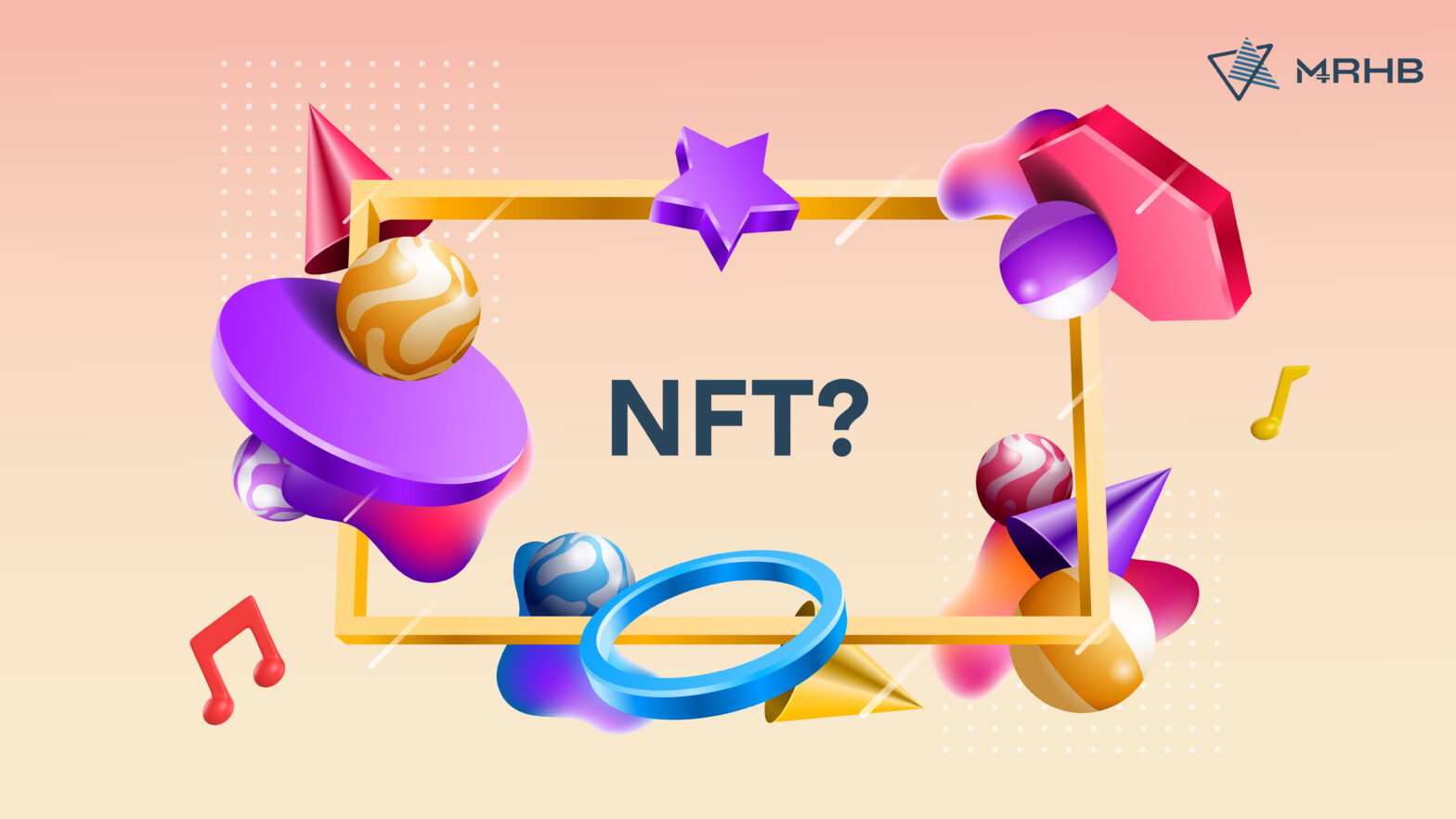Everyday interactions on social media make it impossible to miss the ever-growing popularity of blockchain assets. Video games like Axie Infinity have a huge fan following that now earns real-world profits using in-game NFTs. Not too far behind are digital artists and musicians turning into overnight billionaires by creating digital assets in the form of NFTs backed by their work.
As someone watching all this from the periphery, the world of NFTs and crypto tokens seems almost magical. How can a digital painting or clip sell for millions? How can a photograph or meme created by an unknown artist have the internet bidding for its original copy? What makes Axie’s tokens so precious? Let’s find out!
What Is An NFT?
NFT stands for Non-Fungible Tokens. As a phrase, NFT is composed of two key terms i.e. “non-fungible” which signifies irreplaceable or unique, and “token” which means an asset that has been tokenized on the blockchain.
Put simply, an NFT is a tokenized digital asset that can range from unique pieces of art, music, videos, or other collectibles.
In recent years, the size of the NFT market is estimated to be $44 million. To get an idea of NFT’s importance in the crypto-trading arena, here are a few key facts:
The weekly sales volume of NFTs has increased from 100 sales in 2017 to about 50,000 sales in 2022.
- A single month in 2021 recorded over 1.5 million NFT art sales.
- The OpenSea marketplace for NFTs has at least 250,000 monthly active users.
How Does An NFT Work?
NFTs are cryptographic tokens that represent physical or digital assets on a blockchain. The minting process of an NFT assigns unique identification codes and metadata to an NFT. This means that buying a particular NFT gives you digital ownership of a distinctive tangible or intangible item.
There are two ways to mint an NFT. The first one involves direct minting using smart contracts. While the second one, termed as “lazy minting” uses an NFT marketplace as a platform to mint new NFTs. If you want to try minting your own NFT, here are a few simple steps that you can follow:
- Download a crypto wallet such as MetaMask, Coinbase or the Sahal Wallet. Create an account and buy some ETH coins. These ETH coins will be used later as gas fees to fund your transactions.
- Connect your crypto wallet to an NFT marketplace. There are many popular options to choose from such as OpenSea, Rarible or Souq NFT.
- Now choose a digital file that you want to convert into an NFT. Ensure that you own the Intellectual Property Rights to this file, as only a unique asset can be considered an NFT.
- Find the “create” option on your NFT marketplace platform and upload your digital file. You will be prompted to fill in information about this file including it’s name, description and category type.
- Select the “free minting” option and enter a name for your NFT. Your newly minted NFT is now ready to be sold on the marketplace!
In economic terms, NFTs can revolutionize the ownership and monetization of different forms of art and commodities. With decentralized finance as the base of tokenized transactions, NFTs are a doorway to greater autonomy for new-age content creators and investors alike.
How Is NFT Different From Crypto?
The difference between NFTs and cryptocurrencies relies on the variance in fungibility.
A cryptocurrency such as Bitcoin is “fungible”, i.e. replaceable. So in the event of a blockchain transaction, one bitcoin can be traded or exchanged for another without any effect on valuation.
NFTs, on the other hand, are marked for their originality or “non-fungibility”. In real world terms, this property can be found in irreplaceable assets that do not have a copy such as the Mona Lisa, the Taj Mahal or vinyl records.
Non-fungibility implies that one NFT is not interchangeable with another, as each of them has a unique digital signature. It is impossible to exchange or trade one NFT for another, imparting a special ownership right to people who buy them.
Some popular digital records such as an NBA top shot clip, art from the EVERYDAY collection, and the Nyan cat have been turned into valuable NFTs. Collectors of these pieces evaluate their merit in terms of social prestige that comes from owning a part of cultural history that can be linked directly to its creators.
Where Are NFTs Stored?
Most NFTs are stored on blockchains that exist in an online network. These are called on-chain NFTs. There are certain NFTs that use a combination of domains both online and offline to store data. The NFTs that employ offline storage spaces are called off-chain NFTs.
The databases that host NFTs can be either centralized or decentralized. Centralized hosting can be risky because if they choose to shut down someday, the owner’s NFT will be lost forever. This is where decentralized hosting comes to rescue by utilizing a network of nodes to host NFT data.
A common and reliable decentralized storage option is the IFPS (Interplanetary File System). An IFPS uses a distributed peer-to-peer network to create a hosting service that is resistant to single points of failure. Currently, this is the best way to ensure holders get more control over their assets as no single entity has power over its functions.
The IFPS combines off-chain storage with blockchain storage to create a sustainable host for NFTs. In addition, its decentralized data structure makes it censorship resistant as well as highly secure in the long run.
Types of NFTs
With the blockchain network, NFTs can be built to back an infinite number of unique assets both digital and real-world. Here are a few popular NFT types you are most likely to encounter:
1. Digital Art
Artwork can be digitized and tokenized on the blockchain to create an NFT. Digital artists have taken to using the Ethereum blockchain network to give a unique identity to their work and trade it on popular NFT marketplaces such as Rarible and OpenSea.
Some benefits of creating Digital Art NFTs include the elimination of intermediaries and wider opportunities for circulation and diversification for artists. For collectors, buying art as an NFT guarantees original ownership and authenticity of the content being traded.
2. Gaming
Blockchain technology has created a gaming universe that allows players to collect their wins as tokenized prizes. NFT-based digital assets are now being awarded to gamers for their efforts and participation in the virtual world.
Video games such as Axie Infinity now support Play-to-Earn projects that allow users to earn in-game NFTs. These NFTs can be sold on popular crypto exchanges leading to real-world profits for players!
3. Memes
Memes signify a piece of internet history that was special or iconic to many. This gives them a sentimental value that millions of people find relatable. Many popular memes are now minted into NFTs and sold to enthusiasts as highly prized digital assets.
Classic memes such as the Disaster Girl, Nyan Cat, and Bad Luck Brian have now earned massive recognition in the NFT space. Collectors of these social media images have willingly paid big bucks to become the sole owners of their original copies.
4. Music
Music NFTs allow artists to eliminate third-party players from controlling their work. This means that musicians can reduce their reliance on streaming services and production houses by becoming sole owners of the songs they create.
Launching music as an NFT gives fans an opportunity to possess authentic pieces of sound that can be traced back to its creators. Some examples of music NFTs are Grimes ‘War Nymph Collection’ and Shawn Mendes ‘Genius Collection’.
5. Real World Assets
The traditional way of managing real-world assets through centralized middlemen and paperwork is tedious. With the advent of Web3 technology, people are looking to decentralize their investments and transactions. This has led to a rise in platforms that deal with NFTs backed by real-world assets such as physical commodities, real estate, luxury goods, and art.
Although real asset-based NFTs are yet to go mainstream, companies such as MRHB Network took a step in this direction by providing the opportunity to invest in tokenized gold and silver. Blockchain ledgers offer immutable data keeping which can be more effective than traditional records for securing proof of ownership.
Are NFTs Halal?
The question of whether a particular NFT is halal or not depends on the type of asset it represents. In its essence, an NFT is just a mode of investment and the moral merit of an investment can be judged after scrutinizing the project it supports.
If an NFT project has elements of unethical business, pornography, or alcohol, it is considered Haram. However, rejecting the entire band of NFTs due to skepticism about cryptocurrencies and digital assets is not advisable to new-age investors.
NFTs are a great step towards financial inclusion and freedom for people who have previously found themselves marginalized by the centralized financial system. This includes small investors, minority communities, and independent artists who want to diversify their investment portfolio on Web3.
Where to Buy Halal NFTs?
With the advent of halal crypto platforms, you can find a portfolio of NFTs that strictly support socially responsible and ethical assets. As a result, faith-conscious individuals have more opportunities to find NFT projects that are completely halal and trustworthy.
If you are looking for an NFT marketplace that focuses on ethically and socially responsible investments, MRHB has a solution for you!
Every NFT listed on the Souq NFT marketplace is verified by the MRHB Shariah Scholars to confirm its quality and adherence to Sharia principles. As such, you do not need to worry investing in NFTs on Souq NFT marketplace as all the assets listed are halal NFTs.

